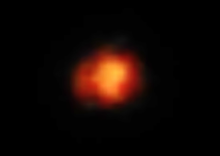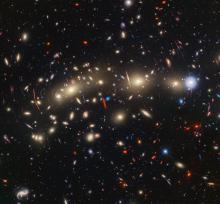Listen to today's episode of StarDate on the web the same day it airs in high-quality streaming audio without any extra ads or announcements. Choose a $8 one-month pass, or listen every day for a year for just $30.
You are here
Busy Nursery
A giant stellar nursery in a nearby galaxy is giving birth to thousands of new stars. That includes some of the more massive stars ever seen, which will explode as supernovas. But most of the stars are much smaller and more sedate, so they’ll live long, quiet lives.
NGC 346 is 200,000 light-years away. It’s the biggest and brightest star-forming region in the Small Magellanic Cloud -- a close companion to our home galaxy, the Milky Way. The nursery probably is about three million years old, yet it may already contain tens of thousands of stars. It probably also contains thousands of stellar wannabes -- objects that have not yet lit the fires of nuclear fusion, allowing them to shine as true stars.
Until recently, astronomers had seen only the brightest and most massive of the stars that are still being born. But using James Webb Space Telescope, they found hundreds more. Most of them will form stars that are similar to the Sun or smaller. It’s the first time we’ve ever seen the birth process of such modest stars in any galaxy beyond the Milky Way.
Webb discovered dust in the disks of material around the newly forming stars -- also a first. The dust grains are made of heavy elements that could someday form planets around the stars -- especially small, rocky planets like Earth. So NGC 346 could be showing us the birth not only of thousands of future stars, but of thousands of future planets as well.
Script by Damond Benningfield






